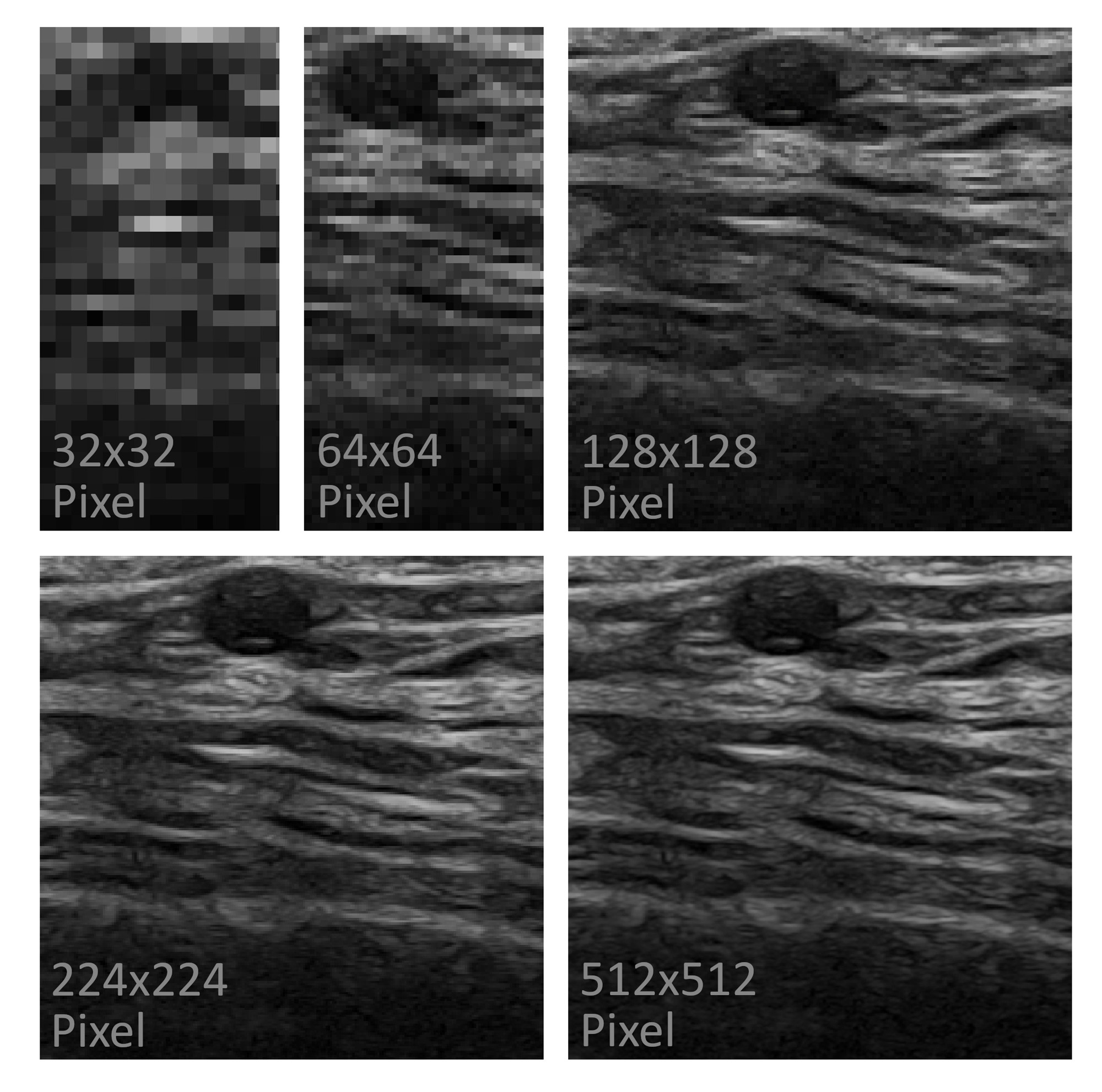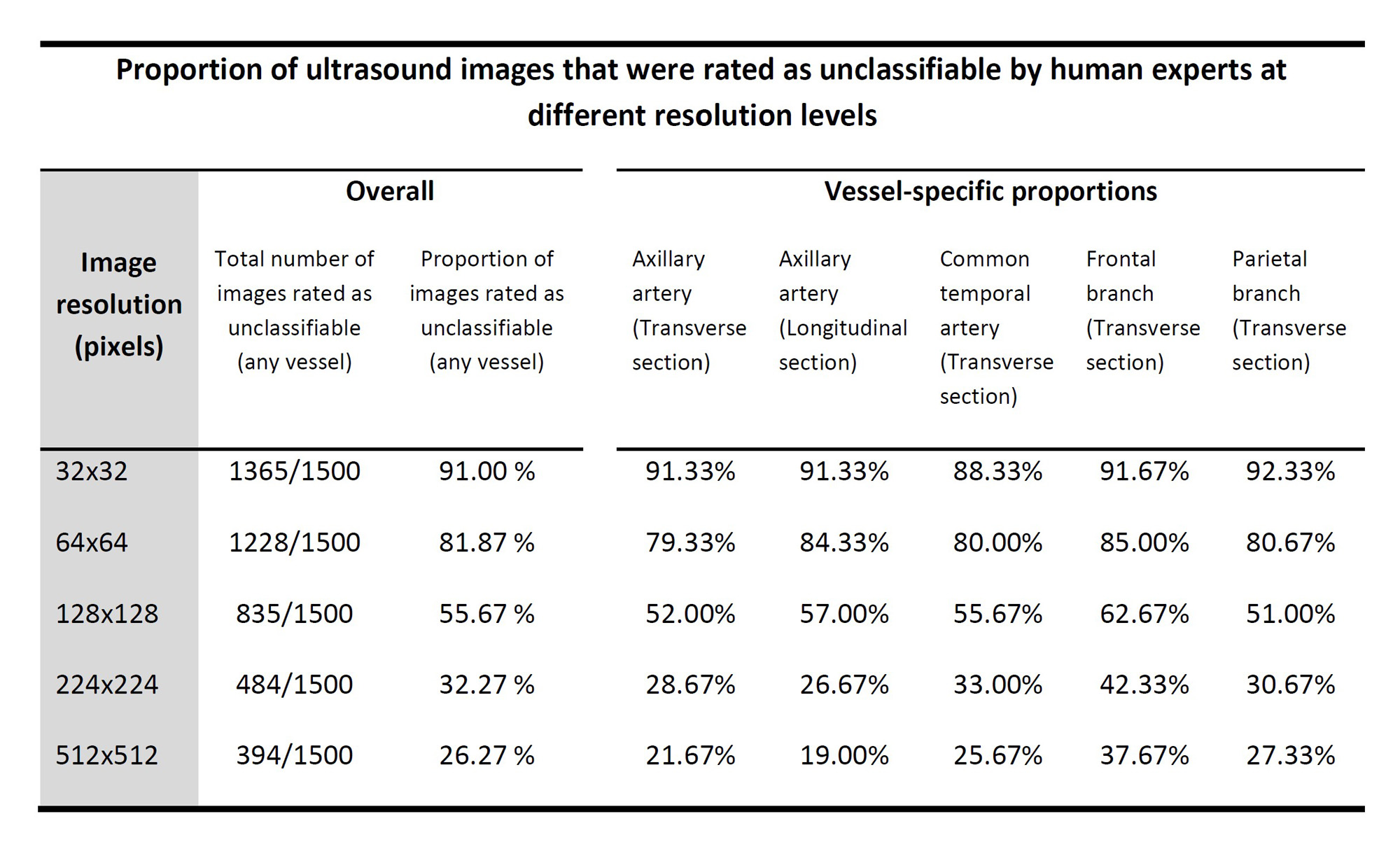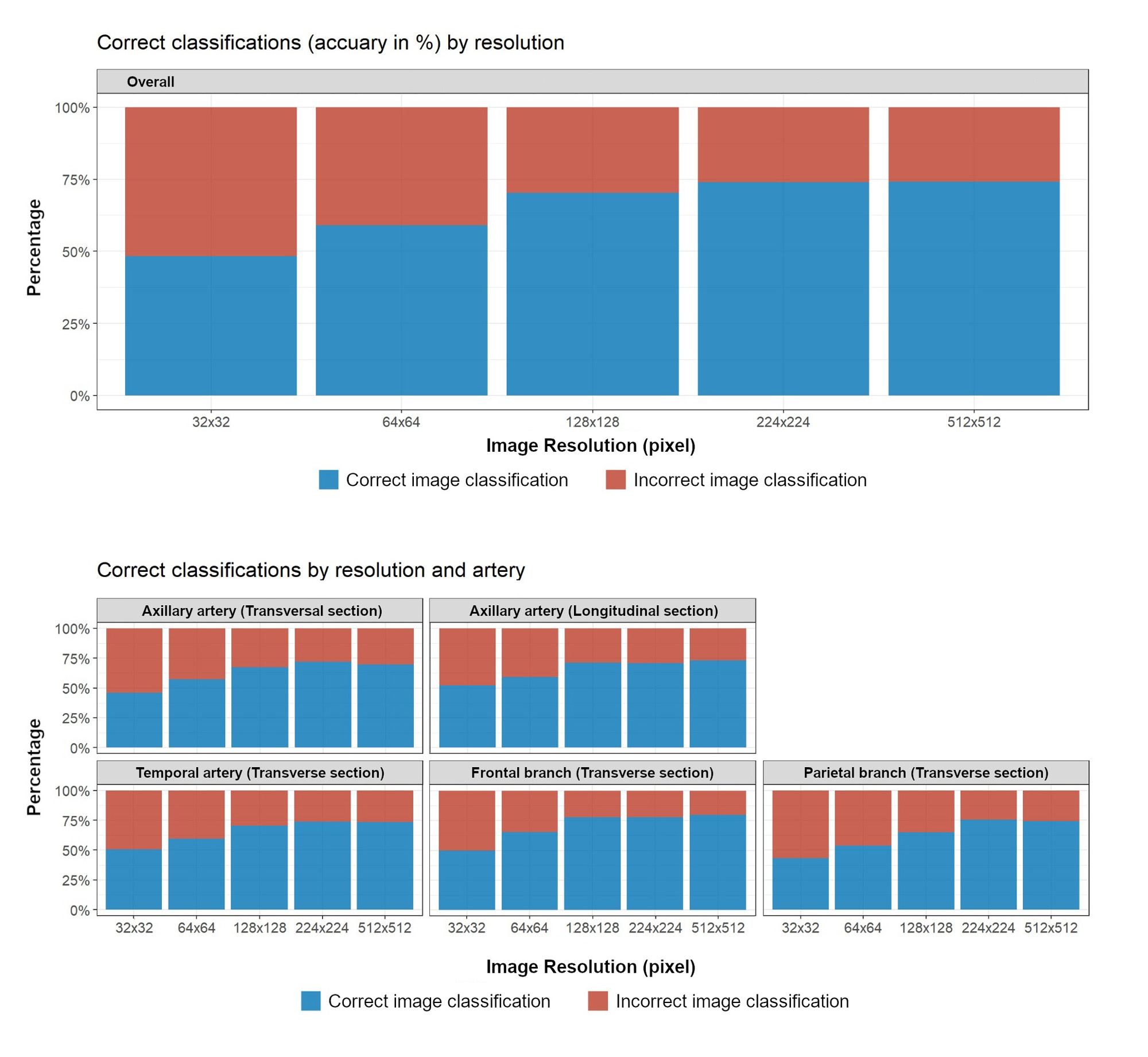Session Information
Date: Tuesday, November 14, 2023
Title: (2387–2424) Vasculitis – Non-ANCA-Associated & Related Disorders Poster III
Session Type: Poster Session C
Session Time: 9:00AM-11:00AM
Background/Purpose: Giant cell arteritis (GCA) is the most common form of vasculitis in adults, necessitating prompt diagnosis to prevent severe complications. However, access to expert GCA ultrasonography is often limited to larger medical centers. The utilization of artificial intelligence (AI)-based assistance for ultrasound image classification holds significant potential. The development of such AI systems involves selecting a neural network architecture from a wide range of options, each with distinct characteristics, including limitations in processing image size, resolution, result quality, and resource efficiency. This project aims to address the minimum resolution required for human experts to reliably classify ultrasound images of commonly affected arteries, distinguishing between GCA and normal.
Methods: In this study, a blinded classification task was conducted, involving 42 international experts from the OMERACT subgroup on ultrasound in large vessel vasculitis. A set of 250 vascular ultrasound images from both GCA patients and healthy individuals were presented to the experts. The image selection process initially comprised 10 B-mode scans each of the common temporal artery, its frontal branch, parietal branch, and the axillary artery (all in cross-section), as well as the axillary artery in longitudinal scan. These 50 images were presented in a random order at five distinct resolution levels: 32×32, 64×64, 128×128, 224×224, and 512×512 pixels (refer to Figure 1). The survey and image classification tasks were conducted using REDCap version 13.2.5, while data interim analysis was performed utilizing R (version 4.3.0).
Results: This interim analysis includes data from 30 study group members with an average of 10.5±6.4 years (mean±standard deviation) of experience in ultrasound in GCA. Across all artery categories, the proportion of images considered unclassifiable decreased as the image resolution increased. The mean percentage of unclassifiable images was 91% at 32×32 pixels and reduced to 26% at 512x512pixels (refer to Table 1). Similarly, lower image resolution resulted in less frequent correct classifications (see Figure 2). The chance of correct image classification was comparable at image resolutions of 512×512 pixels (highest resolution level) and 224×224 pixels (odds ratio = 0.99, p=0.891), while it was significantly lower at image sizes of 128×128 pixels (OR=0.79, p=0.01), 64×64 pixels (OR = 0.42, p< 0.001), and 32×32 pixels (OR=0.24, p< 0.001).
Conclusion: As the image resolution increases, the proficiency of human experts in GCA ultrasound improves, enabling more confident and accurate classification of vascular ultrasound images. At a resolution of 224×224 pixels and above, classification accuracy exceeded 50%. The best classification performance was achieved at a resolution of 512×512 pixels (74.13% of all single-image classifications correct). Yet given the comparable performance at a resolution level of 224×224 pixels (73.93% of all single-image classifications correct), this opens up a variety of perspectives in neural network architecture selection for the development of an AI based assistance for GCA ultrasound image classification.
To cite this abstract in AMA style:
Schäfer V, Chrysidis S, Dejaco C, Monti S, Koster M, Karakostas P, Schmidt W, De Miguel E, Duftner C, Hocevar A, Iagnocco A, Milchert M, Mukhtyar C, Ponte C, Terslev L, Kermani T, Møller Døhn U, Nielsen B, Juche A, Seitz L, Kohler M, Keller K, Karalilova R, Daikeler T, Mackie S, Torralba K, van der Geest K, Boumans D, Bosch P, Tomelleri A, Aschwanden M, Brossart P, Behning C, Bauer C. Exploring the Limit of Image Resolution for Human Expert Classification of Vascular Ultrasound Images in Giant Cell Arteritis and Healthy Subjects: The GCA-US-AI Project [abstract]. Arthritis Rheumatol. 2023; 75 (suppl 9). https://acrabstracts.org/abstract/exploring-the-limit-of-image-resolution-for-human-expert-classification-of-vascular-ultrasound-images-in-giant-cell-arteritis-and-healthy-subjects-the-gca-us-ai-project/. Accessed .« Back to ACR Convergence 2023
ACR Meeting Abstracts - https://acrabstracts.org/abstract/exploring-the-limit-of-image-resolution-for-human-expert-classification-of-vascular-ultrasound-images-in-giant-cell-arteritis-and-healthy-subjects-the-gca-us-ai-project/



